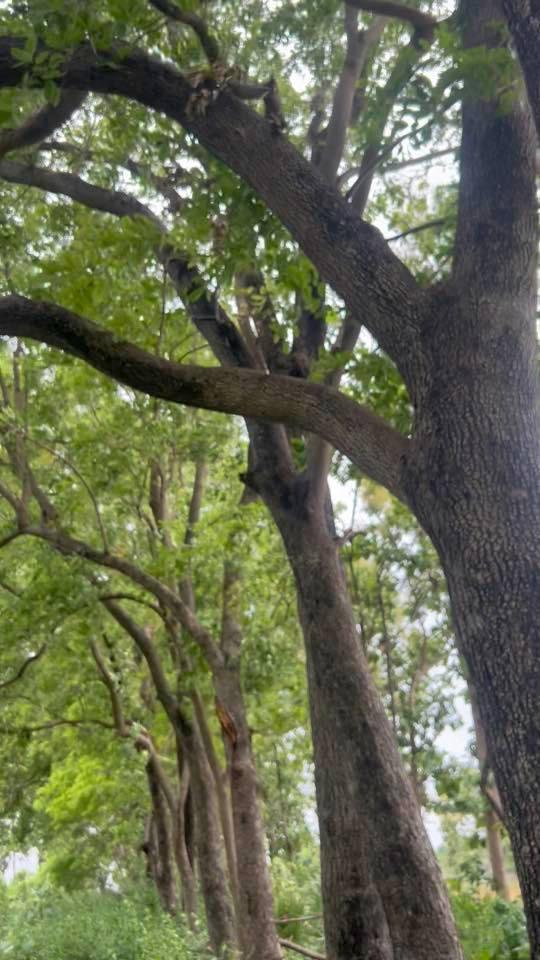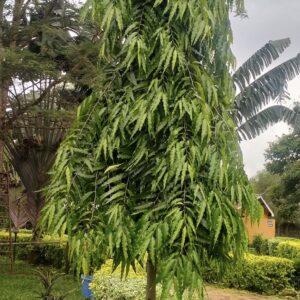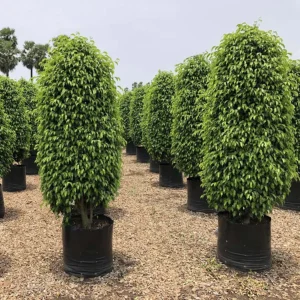Red Sandalwood tree“The small deciduous **Red Sandalwood tree**, scientifically known as *Pterocarpus santalinus*, is indigenous to Andhra Pradesh and the southern Eastern Ghats of India. It is prized for its deep red heartwood, which sets it apart from the fragrant white sandalwood (*Santalum album*).
**Description**
A typical height of 5 to 9 meters; alternating, trifoliate (three leaflets) leaves that are 3 to 9 cm long; small, yellow flowers that bloom in short clusters
Fruit: Round, flat pods with one or two seeds inside
Bark: rough and dark gray; wood: thick, fine-grained, deep crimson; lacks aroma
**Conditions of Growth**
Sunlight: Full sun is necessary.
Soil: Prefers well-drained conditions; can tolerate poor, rocky, or degraded soils.
Moderate watering; once established, drought-tolerant
Climate: Does not tolerate frost; thrives in hot, dry areas.
**Uses**
High-end furniture, carvings, musical instruments, and decorative things are all made of wood.
– Medicinal: Traditionally used in Ayurveda to heal skin disorders, inflammation, and blood purification; – – Dye: The red pigment (santalin) is used in textiles, cosmetics, and food coloring.
Cultural: Religious and regal artifacts have always been valued in China and India.
Status of Conservation
Because of unlawful trafficking and overharvesting, red sandalwood is listed as **endangered**. In India, exports are tightly limited, and managed cultivation is promoted to protect the species.
This tree takes 20 to 30 years to grow, which contributes to its uniqueness and high market value. It also takes a long time to develop its prized heartwood.”





Reviews
There are no reviews yet.